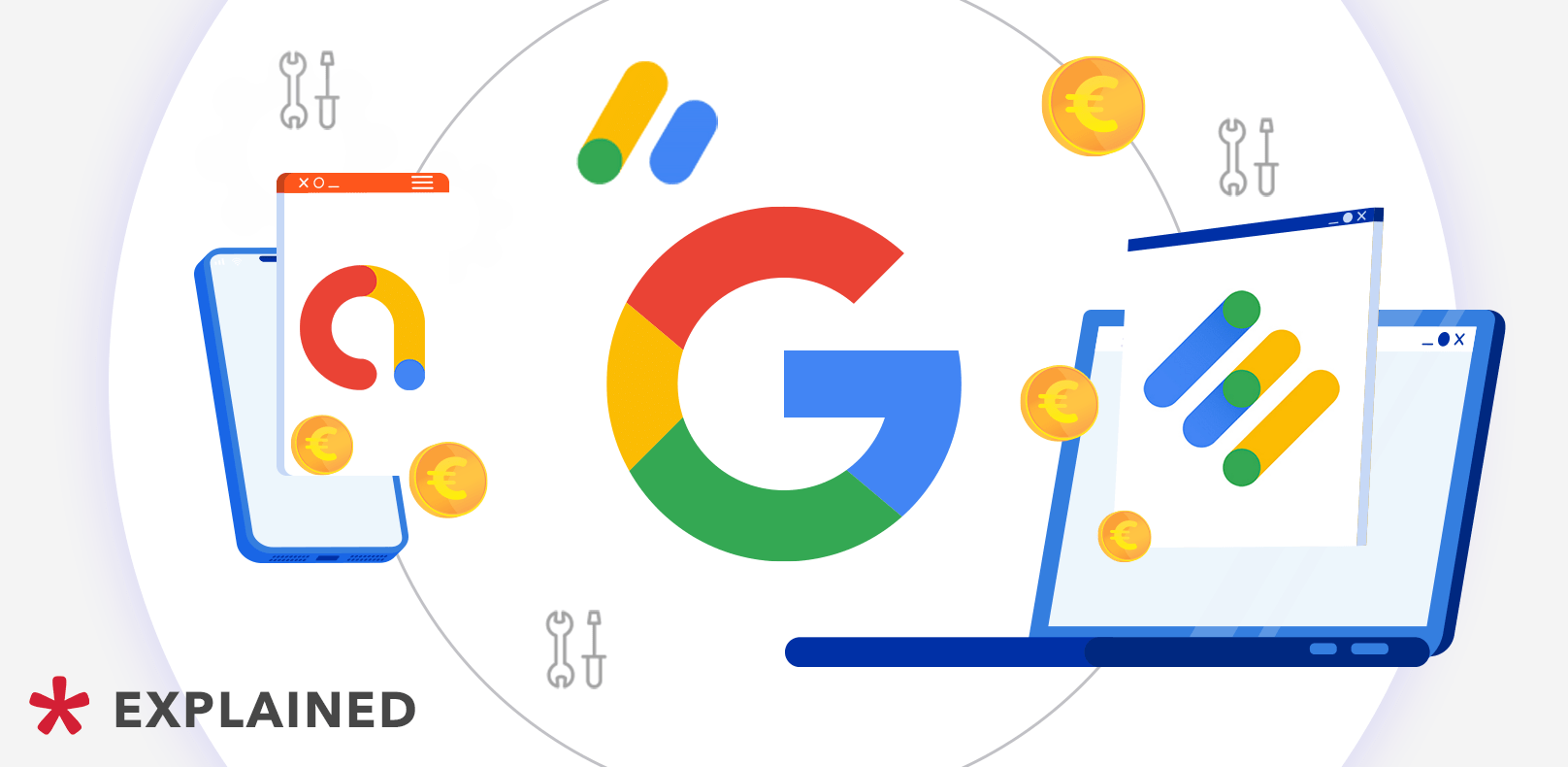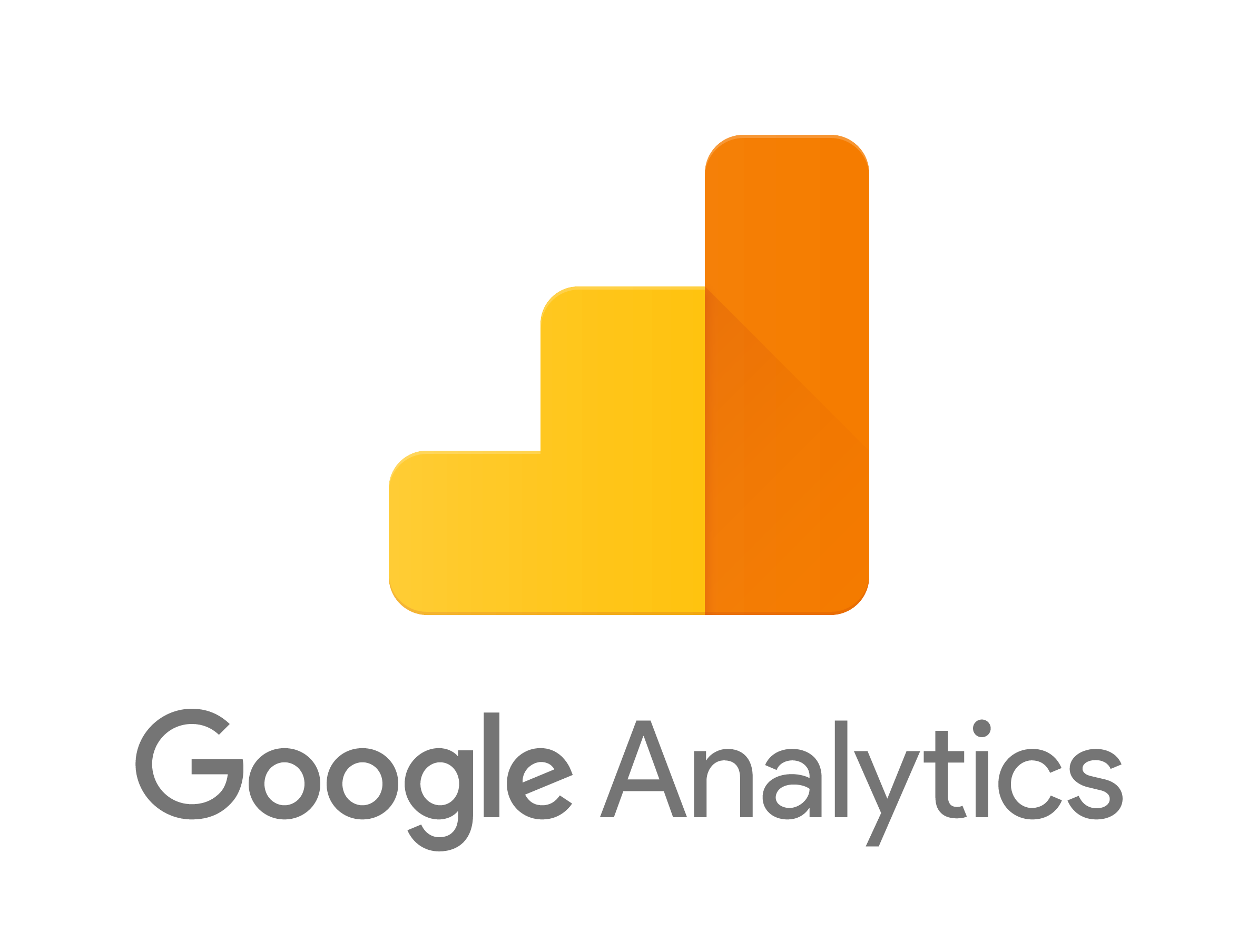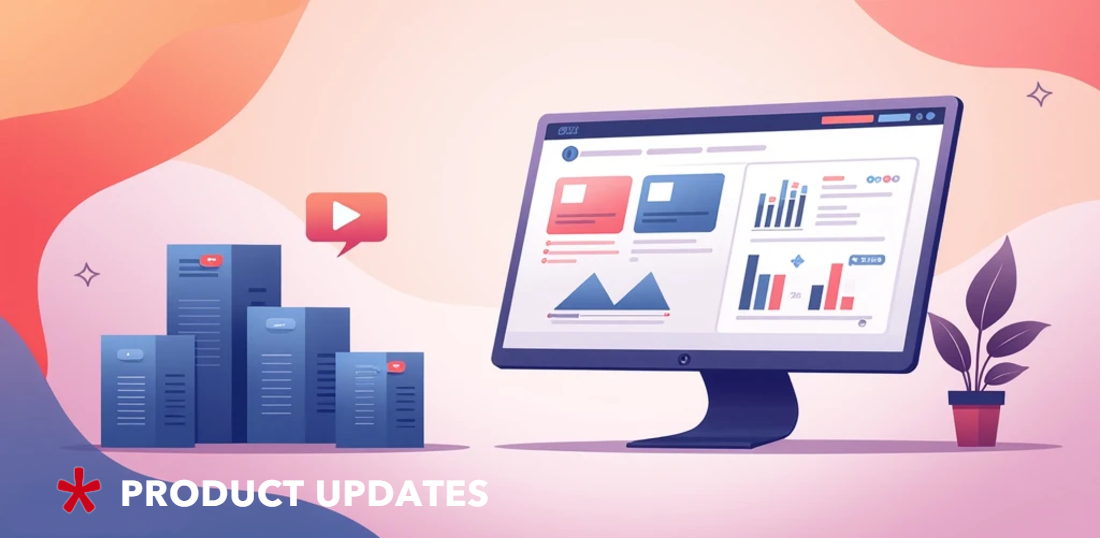
Google Monetization Tools: Adsense, Admob, AdX – How to Choose product?
Google is, without question, one of the pillars of the adtech industry. It accounted for 29% of US digital ad spend in 2020, while Google Ad Exchange conducts sales for more than half of the domain names on the web, setting the tone for the entire ecosystem of display advertising.
Google ad tools became the go-to monetization instruments that can provide fill rates and reliable ad serving for both web and in-app. However, Google has several monetization products with different capabilities. To help you pick a monetization tool that fits your media business, I prepared this express guide.
Monetization Adsense
Google Adsense is the most widely used tool for monetizing products on the web. This pioneering service from Google was released in 2003. It allows site owners to make money from clicks or ad impressions. One Google Adsense account can help you advertise on several different websites. Google AdSense monetization is free and doesn’t require any complex technical setup or fundamental prior knowledge.
There are a variety of ad formats: text, images, HTML ads, video ads, and more. The main strength of this Google website monetization instrument – it is very easy to connect to the site and start the ad serving straight away.
The main disadvantage is very limited functionality. You can’t monetize your assets in Adsense through programmatic deals or other advanced media trading methods. Fine-tune your ads for different sites can also be challenging.
Admob
AdMob – allows you to monetize app traffic with targeted ads. AdMob is free.
In addition to being able to filter which ads will appear, it gives you the ability to customize them to match the look and feel of your application. The most common ad formats that can be created for apps are:
- banners
- interstitials ads
- rewarded video
- native ads
AdMob supports automatic updates on Google Play. In Google app monetization, it is possible to serve ads from multiple ad networks to maximize fill rates and increase profits.

Google AdX
Google AdX – is not merely a platform for traffic monetization, it is an online marketplace;
With Google AdX (formerly known as DoubleClick Ad Exchange), publishers can sell their traffic to advertisers and agencies. The platform uses real-time bidding, therefore it is possible to adapt the price depending on various factors.
AdX provides more control and flexibility in monetization with many tools, in particular:
- Preferred deals (monetizing traffic for placing advertisements of certain brands, agencies, etc., which will lead to a much higher CPM);
- Anonymous / Branded Inventory (promotion of inventory as named, semi-anonymous or anonymous);
- Advanced Targeting (the ability to segment inventory using different targeting segments such as geography, device, and audience);
- Passback (monetization of residual traffic by plugging additional demand partners), etc.

Google Ad Manager
Google Ad Manager is a more advanced Google monetization tool. There are two available types of GAM: Ad Manager (free version) and Ad Manager 360 (paid version).
Google Ad Manager is a free ad management software frequently used by small and medium publishers. The maximum threshold for impressions varies from the region to region. For instance, for the USA or Canada, up to 90 million impressions per month from ad units (excluding video) can be served.
Google Ad Manager is endowed with a wide range of capabilities:
- connection through an API
- more detailed reporting
- ability to manage advertising blocks
- ability to manage priorities in the ad serving
- ability to use a key-value pair for custom parameters, and so on.
- variety of ad formats: native ads, responsive ads, video ads, etc.,
Google Ad Manager 360
Google Ad Manager 360 is an enhanced version of GAM designed for big media owners and boasts more flexibility for traffic monetization. There are financial and impression requirements to get an account. GAM 360 requires over 90 million impressions per month.
In addition to the standard GAM features, Google Ad Manager 360 offers many additional perks:
- Open Bidding (formerly known as EBDA and Exchange Bidding) – an analog of Google’s Header Bidding technology, increases the level of competition and demand for traffic;
- Advanced video settings (options availability may vary by GAM 360 account type);
- Detailed targeting for the audience, as well as automatically suggested ad units;
- Formats: Google Ad Manager 360 supports all ad formats, as well as additional ones such as multimedia formats and video in a banner;
- Advanced audience segmentation (publishers can use Audience Solution to segment audiences based on specific demographic data and sell resources with narrow targeting);
- More detailed reports available (Google Ad Manager 360 integration with Google Data Studio);
Admixer is a certified Google Ad Manager 360 MCM partner, media owners can delegate management of particular inventory or an entire account to our traffic specialists and reap the rewards of our expertise, without any hassle.

Additional tools
Google also offers other services to improve the efficiency of the publisher’s traffic monetization:
- Google Analytics – provides a wide range of opportunities for analyzing traffic monetization data;
- Google Publisher Console – allows you to monitor ad serving
To Sum Up
Google is a go-to monetization partner globally that provides fill rate and competitive eCPM across all the major environments and inventory types. However, the devil is in the details and frequently media owners get lost in the options and miss out on the important functionalities.
Admixer has worked with Google’s instruments for almost a decade, and recently became Google’s certified MCM partner. We act as a revenue consultant, and advisor on digital traffic, inventory efficiency, data, and privacy compliance. If you need advice on managing and optimizing your traffic with Google Ad Manager and Google Ad Manager 360, we are here to help.





